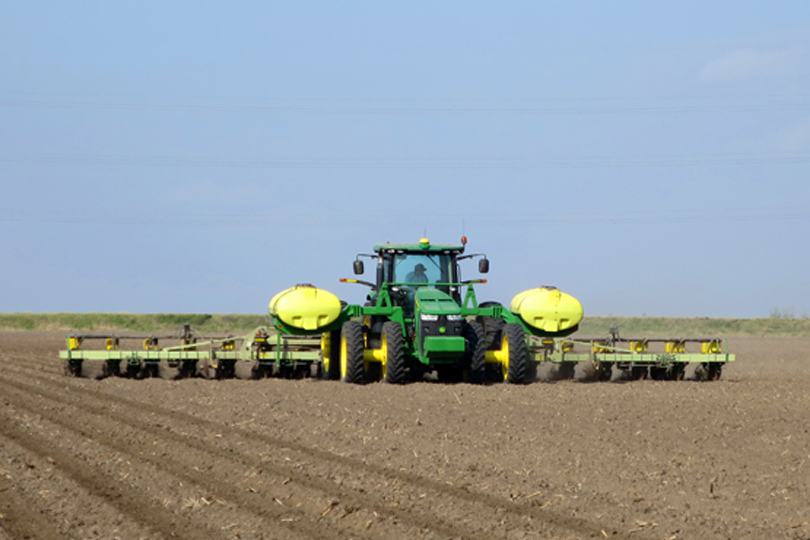By Shelby Shank
Field Editor
Spring in Texas for many means blooming flowers and crawfish boils, but for farmers, it’s time to start planting.
“We’re pretty blessed here this spring for how the weather has been,” Matt Boerner said. “We’ve had pretty good rainfall weekly. Last week, we had about an inch of rain. The week before that, about a half inch, and then the week before that, we received roughly four to five inches.”
Boerner is a sixth-generation farmer in Cooke County where he grows wheat, peanuts, oats, hay and rye grass. He raises cattle, too.
Boerner planted most of his crops last fall but shared his gratitude for the frequent rainfall. He will begin planting peanuts in June and is optimistic for the growing conditions.
“If we keep these rainfalls up into late spring, we’re going to have a very good crop year,” Boerner said.
While Boerner appreciates the rainfall, he notes there are some farmers struggling to get corn in the ground because of wet conditions.
A few counties over in Collin County, farmers like James Foster are waiting for a break in the rain.
Foster began planting his corn mid-March and hopes to be finished by April, if the weather cooperates.
“I’d say we’re about 30% planted right now. We’re about 300 acres into it, and we’re going to plant 700 acres of corn this year,” Foster said.
They normally plant at the beginning of March, but due to frequent rainfall, the fields have not been dry enough to get seeds in the ground. As soon as the ground began to dry each time, Foster said they would get more rain, setting them back once again.
It’s just the opposite in the Panhandle. Farmers are desperately waiting for rain and facing severe drought conditions.
“We’ve been pretty dry, and we’re waiting on rain,” Barry Evans said. “Until we see a change in rainfall pattern, our prospects are not good at all for our dryland crop. But we know that can change pretty quick, and we’re hoping for it.”
Evans farms in Swisher County and plans to begin planting cotton in April.
With dry conditions, Evans is going into this planting season cautious.
“For the 2023 growing season, there’s just so much uncertainty. The inflation and availability of chemicals and fertilizer is volatile,” Foster said. “We’ve seen those prices come down some, which gives us hope, but we’re also nervous because of what happened last year.”
The dry weather also brings a level of uncertainty for some farmers, but there’s still optimism for the year.
“The inputs are high, but the crop values seem to be staying high, and so I think it’s going to be all right,” Foster said.

